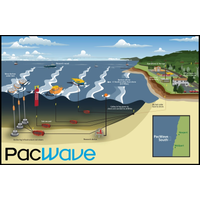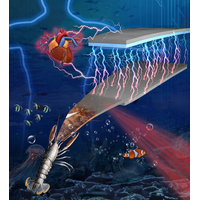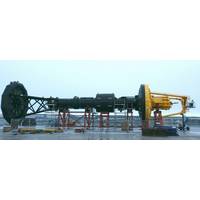
CorPower Joins Simply Blue Energy's Western Star Project Off Ireland
; Sweden-based CorPower said.CorPower's WEC is a surface point absorber-type wave energy converter. The technology, inspired by the pumping of the human heart, consists of floating surface buoys anchored to the seabed by a pre-tensioned system that rise, and fall with wave motion. The resulting mechanical energy is converted to electricity for export to shore through inter-array and export cables.CorPower's WEC- Credit: WesternSta

BOEM Issues Lease for Wave Energy Research Project off Oregon
the testing of up to 20 floating or underwater wave energy converter (WEC) devices, with an installed capacity not to exceed 20 megawatts, to demonstrate the viability of wave energy. A WEC device converts the kinetic and potential energy associated with moving ocean waves into electrical or mechanical energy. Five power and data cables buried below the seafloor will connect the ocean test site to a shoreside facility southeast of Seal Rock.“The PacWave team initiated this collaborative process with several federal and state agencies nearly a decade ago,” said Burke Hales, the chief

Device Turns Shells of Sea Creatures Into Power
and other sea creatures may soon provide a new option for powering medical sensors, phone screens and other devices.A team from Purdue University used chitosan – an abundant natural biopolymer from marine crustacean shells – to create triboelectric nanogenerators. TENGs help conserve mechanical energy and turn it into power.“We have taken an innovative approach to using typically wasted shell material and turned it into functional, self-powered devices,” said Wenzhuo Wu, the Ravi and Eleanor Talwar Rising Star Assistant Professor of industrial engineering in Purdue’s College

Lockheed Martin in Australian Wave Energy Project
Technologies' (OPT) PowerBuoy® wave energy converter technology. The company’s PowerBuoy wave generation technology uses a "smart," ocean-going buoy to convert wave energy into low-cost, clean electricity. The buoy moves up and down with the rising and falling of waves. This mechanical energy drives an electrical generator, which transmits power to shore via an underwater cable. Contributing to Australia’s goal of 20 percent renewable energy by 2020, the project is expected to produce enough energy to meet the needs of 10,000 homes. “We are applying our design and


 February 2025
February 2025





